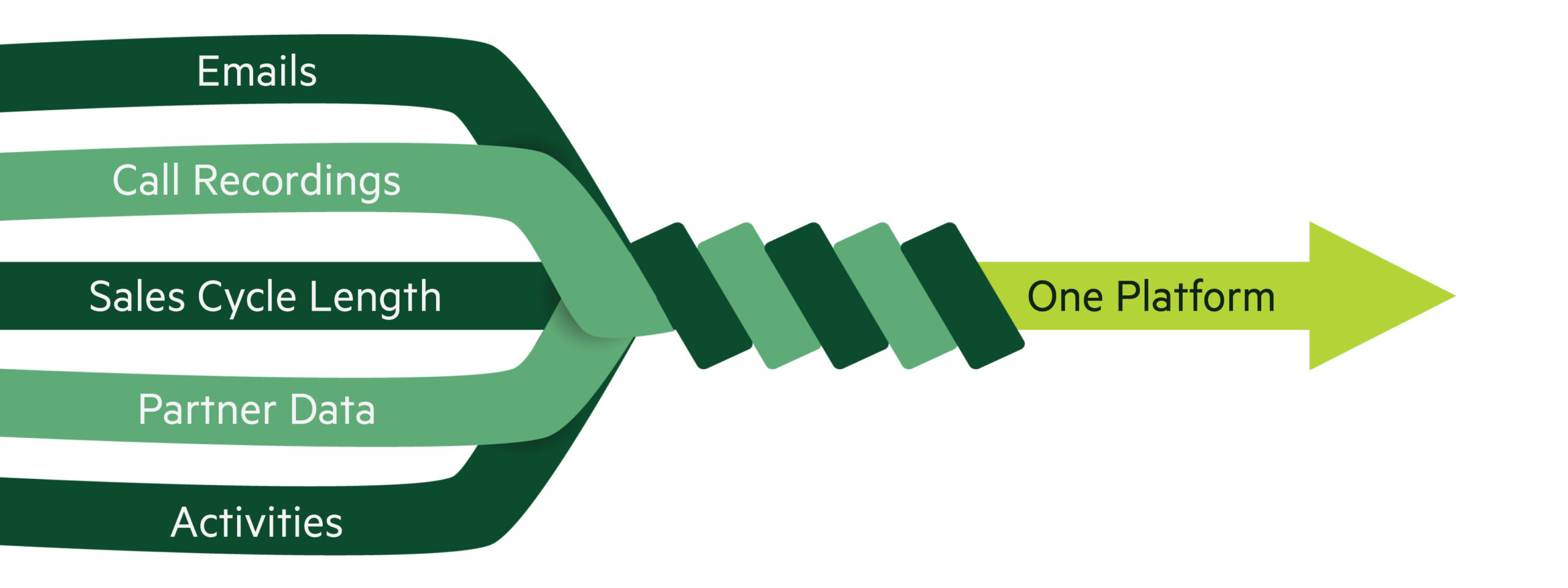Data Consolidation: Seeing the Big Picture in Your Sales Process
Updated:
Published:

Accounting gets a really bad rap, but there is so much we can learn from it.
Think about it. In a matter of days, a bunch of diverse data such as expense reports, new contracts, inventory, discounts, and more are consolidated into a set of financial statements, which can be used by anyone to get a big picture view into any business.
Companies have the same desired outcome with sales and revenue data, but they aren’t approaching the process like accountants.
Sales teams are piecing together diverse technologies across lead generation, prospecting, deal closing, and conversations. They have plenty of data, but they’re missing the big picture.
All the possible data, analyses, and metrics are coming from different tools in different formats with different levels of trust, making the big picture feel like a jigsaw puzzle with lots of pieces missing. Is assembling this story even possible in weeks, let alone a day? How do accountants do it?
Sales teams need an ever-evolving big picture that offers insights into the effectiveness, efficiency, and activity volume of the buyer’s journey.
See the benefits of consolidating sales technology.
Data Consolidation and the 4 Vs of Big Data
Knowing the value data consolidation brings to revenue teams, Salesloft brought data from across the buyer journey (prospecting, deal management, and conversations) into a single platform. Much like how accountants work, all data is available in one source of truth.

While just having data in the same place can be helpful, it needs to be the right kinds of data and handled in the right way. In this case, we lean on some old school big data principles of the three Vs (volume, velocity and variety) originally from Doug Laney during his Gartner days, and then blend in a fourth V, veracity. These Vs offer an accounting-like guide on how to think about and deliver on a consolidated data solution capable of providing the big picture.
Here’s a little more on the four Vs and how to use them when thinking about customer data.
Volume
The V for volume in a historical sense was meant to highlight if organizations have enough storage for all their digital, online data. For Salesloft, volume is our data completeness across the buyer journey. With data from both a large number of small businesses as well as for the largest of enterprise customers, Salesloft offers industry benchmarking and best practices. Volume also gives users value (one more V) through improved AI solutions. These AI solutions require LOTS of data to provide relevant results.
Velocity
Velocity is system responsiveness to user data inquiries. How long does a user have to wait to get the information needed on their screen? It’s also the ability to deliver the right information to the right user at the right time. While reviewing a forecast a sales manager naturally wants to review select deals to better understand them. This can often lead the manager to listening to some of the relevant conversations associated with specific deals. Velocity dramatically decreases if you have to go from your forecasting tool to your sales engagement tool, then to your call recording software.
At Salesloft, applications are actively monitored for performance, with improvements happening all the time behind the scenes. We also have a dedicated Channel Health Team focused on continuous email, call, and SMS velocity improvements.
Variety
The historical legacy of data variety deals with incompatible formats and other messy things that sales teams are still dealing with today if they are working in multiple point solutions, exporting data, and then combining for analysis and modeling. You’re likely losing time and money in the process.
Variety is also about having a richness of data across cohorts and segments. It’s variety – the ability to analyze and compare cohorts – that provide insights for process improvements. These insights are only possible with full-cycle sales data consolidated in one platform. Finally, variety for us on the Salesloft data team is making data available in a variety of ways such as data features Salesloft Coaching, In-App Analytics, options for data exports, a Salesforce Insights package, and a public API to access data.
Veracity
All our data efforts – and yours – are wasted if accuracy (veracity) is ever an issue. Veracity is where data consolidation work can go astray, especially when you are combining data from different sales tools. Consolidated data offers continuity. For example, a call recording linked to many different locations within the platform (deal, activity, coaching) is still only one recording. Behind the scenes we’re ensuring that it’s not only the right recording, but that the solution itself is valuable. Just as important is ensuring that customers trust us with their data, which is why our security team is an important part of our internal data consolidation efforts.
See the Big Picture
Data consolidation is a challenging and ongoing endeavor, but I encourage you to tackle it like an accountant. Consider the process and components of successful data, not just the data itself. Rely on a rich, reliable, and robust (now three Rs) data set to get a complete picture of your company’s buyer journey. Use the insights to improve your sales effectiveness, efficiency, and activity volume. The journey, hence the name, is a continual process and like most journeys, are best not tackled alone but with a trusted platform and company.
See how you can benefit from consolidating with the only comprehensive sales engagement platform.





























